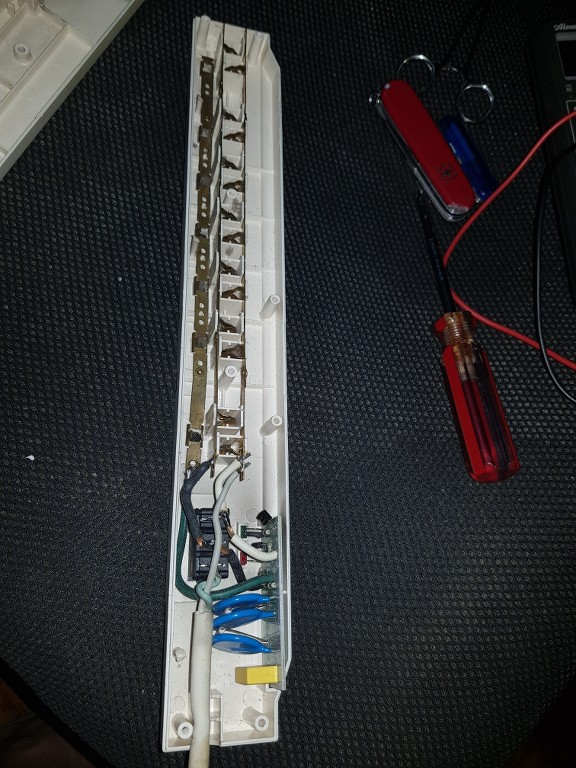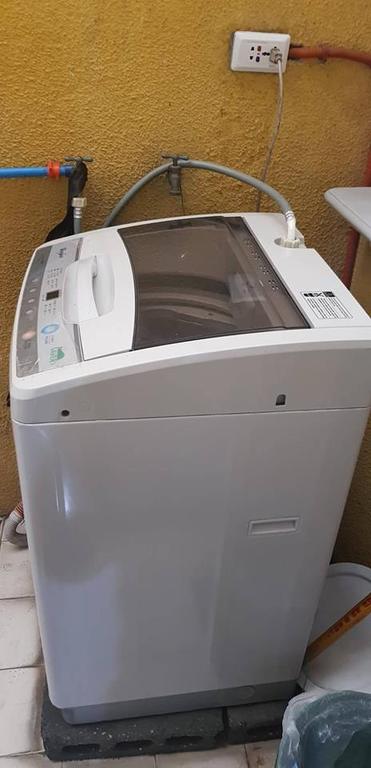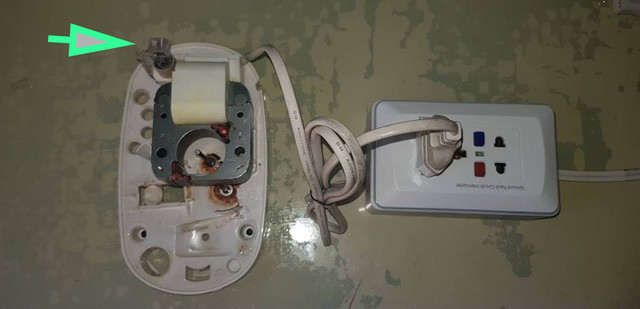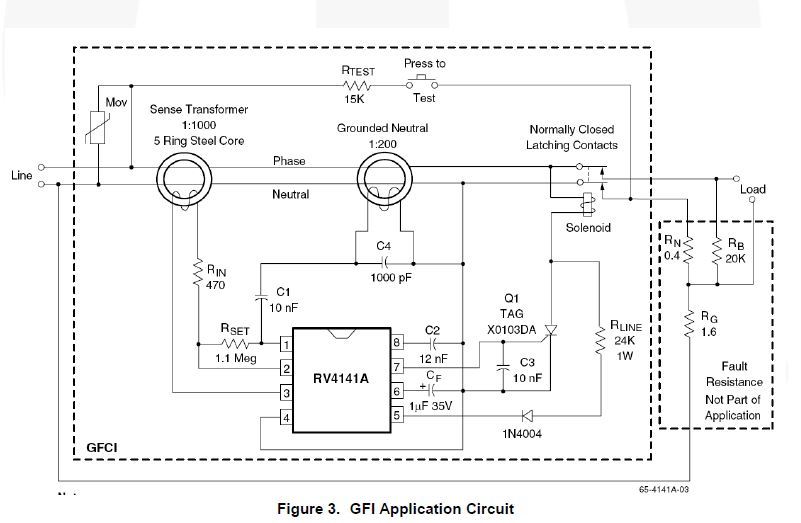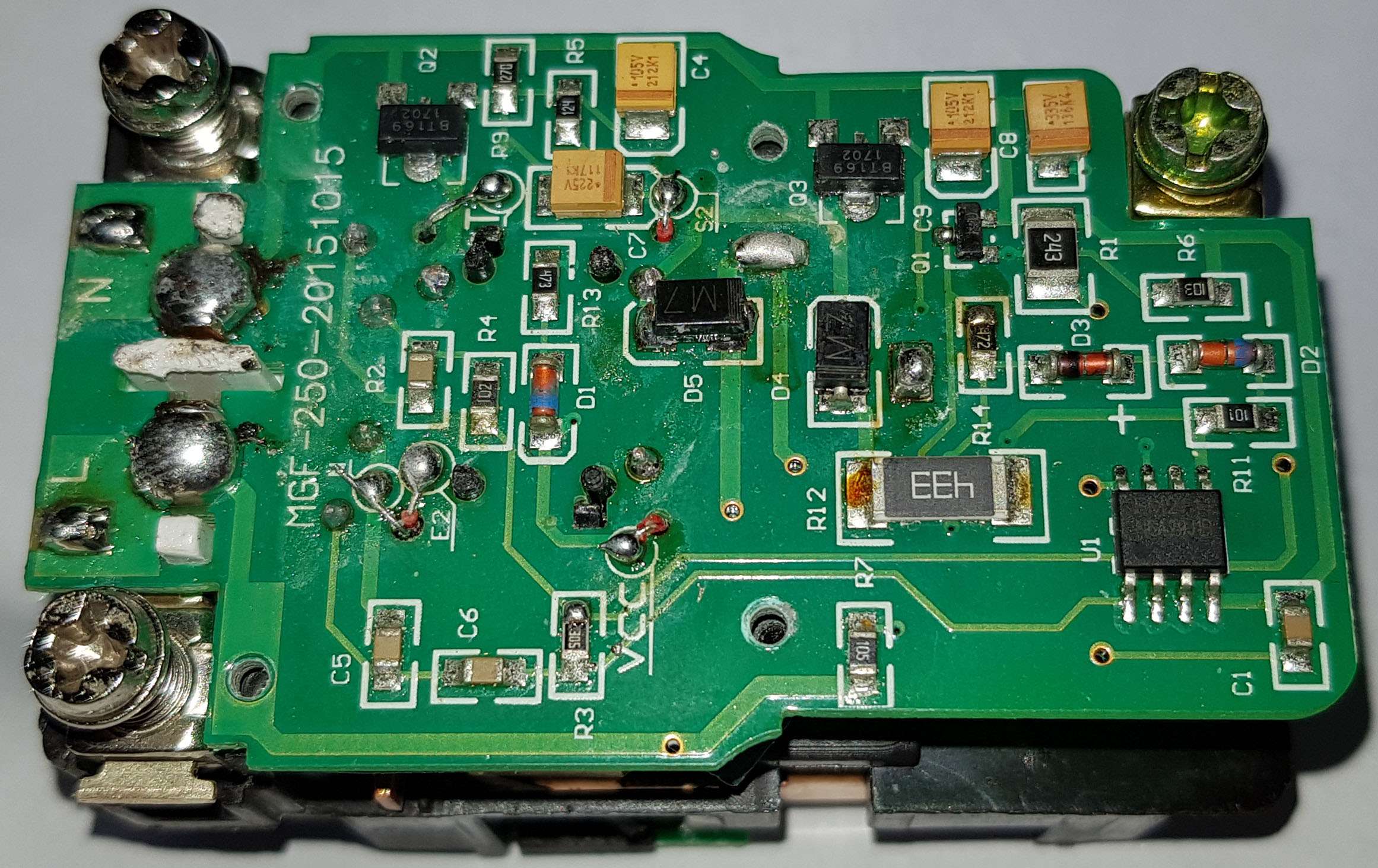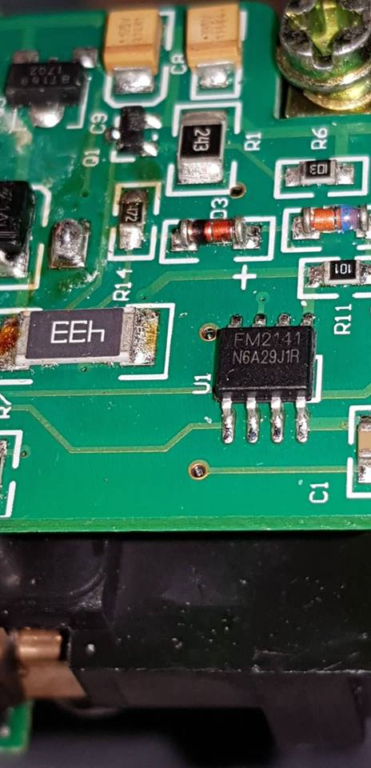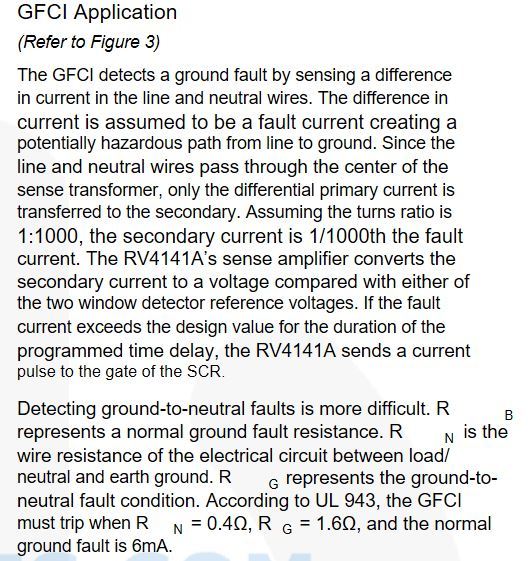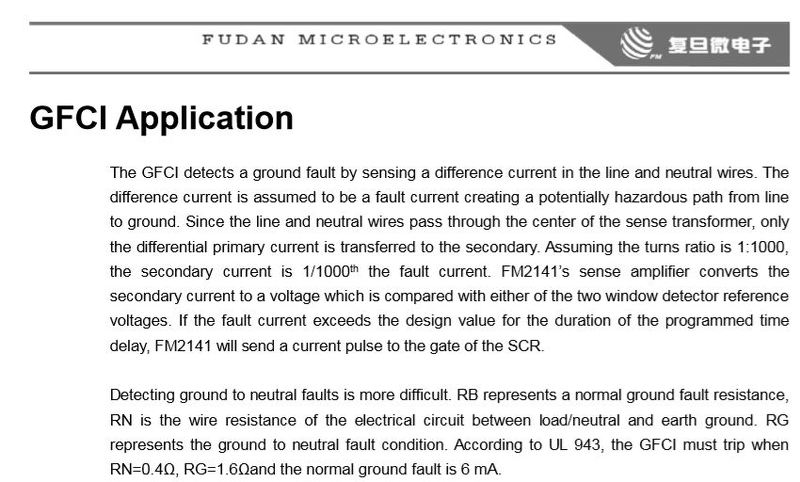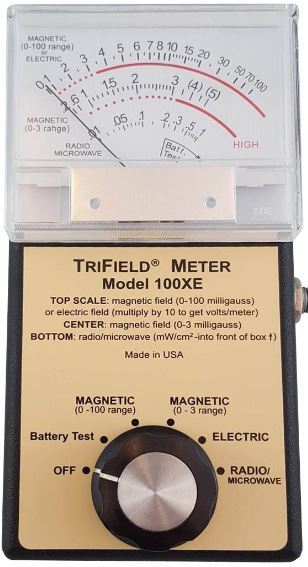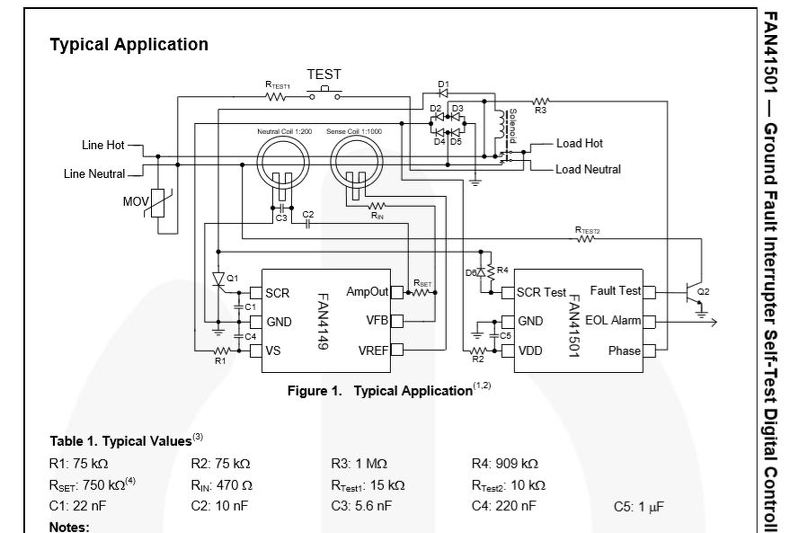I made a series of tests.
I inserted a 240v surge protection between the waterpik shade pole motor and Leviton chipped GFCI. It only trips rarely, like once in 20 switchings!

Here I inserted a 1:1 medical grade isolation transformer (with dielectric shielding between primary & secondary) between the waterpik shaded pole motor and GFCI.
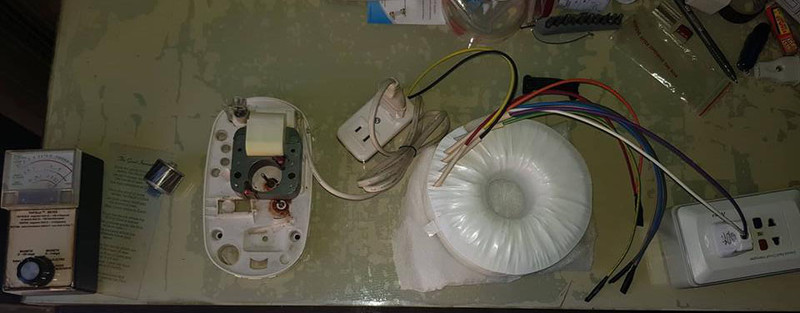
It doesn't trip at all. But is it not transients still pass through an isolated transformer and only the common mode surges were suppressed? But noticed there is no ground, the surface is glass, so could the 240v 1:1 isolation transformer filtering some line to line transients too? The model of it is: http://catalog.triadmagnetics.com/Asset/VPM240-2080.pdf
I bought the 240v 1:1 isolation transformer supposedly to put it on the refrigerator which I tested to trip last year on the GFCI outlet. I thought it trips on all GFCIs. But when I tested the Siemens GFCI breaker lately, the refrigerator no longer trips!
The meter at the left side is a flux meter. I'm studying the flux properties of the shaded pole motors. Note the behavior is the same whether the rotor is put in the stator or not. The flux meter is also to verify if the motor is turned on or off. The needle jumps above 100mG when it is turned on.
Here the shaded pole motor is connected directly to the GFCI. The tripping is 80-90% of the time.
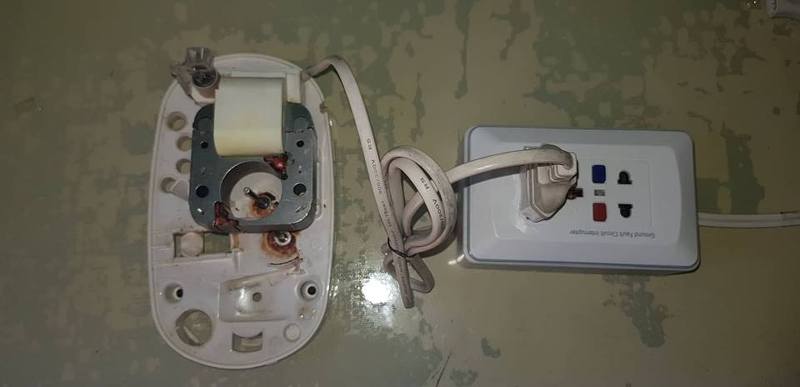
Do you have any flux mapping or plot of a shaded pole motor? Why does it produce more inductive kick than other motors. I noticed the magnetic flux is very strong, more than a 500va isolation transformer or autotransformer. Does motor with very large magnetic flux have more inductive kick?
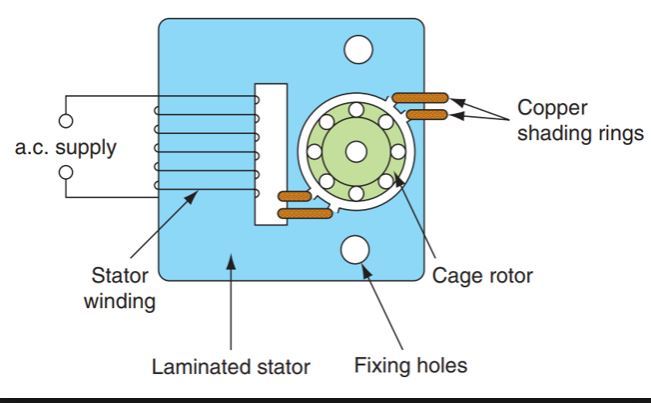
Btw.. there is no other 240v GFCI receptacle with 5mA tripping in the entire world. Only one brand carries it. It doesn't have the auto-monitoring self test in UL 2015. So all using 240v are stuck with it and have to deal with shaded pole motors (in refrigerator, etc.) that can trip it.
I inserted a 240v surge protection between the waterpik shade pole motor and Leviton chipped GFCI. It only trips rarely, like once in 20 switchings!

Here I inserted a 1:1 medical grade isolation transformer (with dielectric shielding between primary & secondary) between the waterpik shaded pole motor and GFCI.

It doesn't trip at all. But is it not transients still pass through an isolated transformer and only the common mode surges were suppressed? But noticed there is no ground, the surface is glass, so could the 240v 1:1 isolation transformer filtering some line to line transients too? The model of it is: http://catalog.triadmagnetics.com/Asset/VPM240-2080.pdf
I bought the 240v 1:1 isolation transformer supposedly to put it on the refrigerator which I tested to trip last year on the GFCI outlet. I thought it trips on all GFCIs. But when I tested the Siemens GFCI breaker lately, the refrigerator no longer trips!
The meter at the left side is a flux meter. I'm studying the flux properties of the shaded pole motors. Note the behavior is the same whether the rotor is put in the stator or not. The flux meter is also to verify if the motor is turned on or off. The needle jumps above 100mG when it is turned on.
Here the shaded pole motor is connected directly to the GFCI. The tripping is 80-90% of the time.

Do you have any flux mapping or plot of a shaded pole motor? Why does it produce more inductive kick than other motors. I noticed the magnetic flux is very strong, more than a 500va isolation transformer or autotransformer. Does motor with very large magnetic flux have more inductive kick?

Btw.. there is no other 240v GFCI receptacle with 5mA tripping in the entire world. Only one brand carries it. It doesn't have the auto-monitoring self test in UL 2015. So all using 240v are stuck with it and have to deal with shaded pole motors (in refrigerator, etc.) that can trip it.

